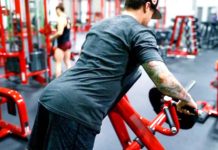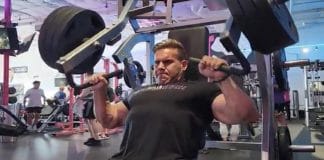Building stability in a crucial joint
The founding fathers of American weightlifting still occupy a somewhat mystical status in the fitness community. Men like Jack Lalanne, who swam from Alcatraz to the mainland while handcuffed, and John Grimek, who competed for the United States at the 1936 Olympics in Nazi Germany were training before the days of weightlifting machines, when all they had were barbells and dumbbells to train with. And many of their feats stand unsurpassed even decades later, and there is one thing they all had in common: crazy shoulder stability.
That being said, let’s take a look at how to build shoulder stability like an old school lifter.
The Old School Shoulder Stability Method
Most old school lifters trained outdoors, both for the spectacle and because gyms didn’t really exist. They incorporated tons of bodyweight movements into their routines, which is something you do not see as often today. A favorite exercise of old school lifters was the handstand – famously utilized by lifters like Abbye “Pudgy” Stockton, Joe Gold, and Steve Reeves. It provided the mechanical foundation for phenomenal feats like overhead dumbbell presses.
How Handstands Build Overall Shoulder Stability
Handstands don’t just increase strength in the muscles surrounding the shoulders. The increase the bodies’ ability to create stability through the core, and translate that stability through the shoulder. In a way, a handstand is like an extreme version of the plank. Any gymnast will tell you that one of the first mistakes when novices try a handstand is they leave their core lax and arch through the back. A great way to progress up to a handstand is to walk your feet up a wall. This will give your core something extra to brace off of and help build comfort with inversion.
Of course, muscles need progressive overload to really grow, but in this age of barbells and machine circuits, stability work like handstands can be a phenomenal new stimulus to any muscle group, forcing your body to grow and adapt to these new movements. Eventually, handstand pushups can be performed, truly building not only strength and stability, but also some quality muscle mass in the shoulders. Of course it’s important to make sure one has proper shoulder mobility before such a movement to ensure proper mechanics and reduce risk of injury. Remember, increasing overhead range of motion will improve overall shoulder health and function.
Plus, regardless of what one thinks about CrossFit, many of their athletes have phenomenal traps and shoulders, and handstands are a huge part of their regimen. It may not be the most inconspicuous movement to do at the gym (you certainly will turn some heads when you are doing handstands in a commercial gym), but is especially convenient for home or vacation training.
The Importance of Shoulder Stability
Now you may think that the shoulders are only good for things like overhead presses and bench presses, but that is not true at all. The shoulders are a very functional joint that are used for a variety of exercises and daily tasks. Stronger, stable shoulders also helps prevent injuries during other exercises, such as pressing movements and daily tasks.
Wrap Up
Overall, shoulder stability is something that was very popular amongst old school lifters, but a lot of the new guys do not focus too much on it. Instead, they focus on strength and size. Stability in this crucial joint is necessary, as it helps with not only other exercises but also functional movements.
For more news and updates, follow Generation Iron on Facebook, Twitter, and Instagram.


















